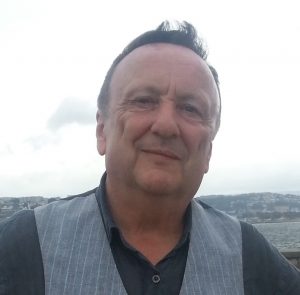Transition – Why is it still such a problem?
“Too often we buy mediocrity and push people into a half-life where their talents, hopes and potential are buried, when for less money we could enable them to be thriving citizens in vibrant communities.”
Our editor Simon Jarrett previews some of the articles in the latest issue of Community living and discusses the theme of transition – the changes that happen not just when someone reaches the age of 18, but all through their life.
For many years learning disability services, commissioners, and social workers have struggled to bridge the gap between childhood and adulthood – that moment when, usually at the age of eighteen, the transition takes place between children’s and adult services. Millions of pounds have been invested, there have been transition teams, joined-up service planning initiatives, specialist commissioning programmes and numerous ‘pilot’ projects that have sought the elusive holy grail of good practice in transition.
Why then, with all this attention, does transition still seem to represent an unfathomable divide in many areas, leading to real damage to the lives of many, who pass into inappropriate services at the age of eighteen and remain in them for the rest of their lives? In our current Autumn issue of the magazine (Community Living 32:1), we discuss the problems of child/adult transition in particular, and change generally, in the lives of people with learning disabilities.
There are specific problems about the transition to adult services that are well-known, such as failing to start the planning process early enough (ideally at age 14) and sometimes starting it catastrophically late (at age 17 ½). Many local commissioners and social workers still, too often, fail to involve families and the young person themselves in the process a meaningful way.
They do not seek creative local support networks that enable people to stay connected in their local areas, rather than be dispatched to high-cost, inappropriate, soul destroying institutional services in other parts of the country. Uncertainty about budgets often undermines planning and causes late, hasty, wrong decisions. Sometimes, incredibly, there is still not even reliable information held locally about who is going through the transition process.
But, as some of our writers in this issue highlight, there are deeper, underlying problems that undermine the change. Our columnist Simon Duffy of the Centre for Welfare Reform points out in his article ‘On the right road to adulthood’ that often a poverty of aspiration can pervade the whole process. We do not consider young people with learning disabilities as passing into a new life of employment, citizenship and opportunity, as we do with young people who do not have learning disabilities.
Instead, too often we seek services that will contain them, feed them, wash them and clothe them, and with luck offer them some activities to lighten the days. We often pay a lot of money to do this. We buy mediocrity and push people into a half-life where their talents, hopes and potential are buried, when for less money we could enable them to be thriving citizens in vibrant communities.
We know what needs to be done. We even know how it can be done. We now need the courage and aspiration to do it
Change is not just for your eighteenth birthday
The focus on transition at age 18 can mean that issues about change at other times in people’s lives are ignored. Once a young person is settled in their new ‘adult’ life, they can be left there for ever, as if no more change ever needs to occur. In another powerful article in this issue (‘To err is human, to live fully is divine’), Suzanne Gale asks ‘why do you only get one go at change when you’re an adult with a learning disability?’ People change throughout their lives. They change their ideas, they get in and out of relationships, they get married, become parents, and sometimes get divorced. They change interests, jobs and careers. They also get old, and eventually they die. All of these are natural transitions, but they are often not recognised in the lives of people with learning disabilities.
Like Peter Pan, they are expected to live a life of semi-childhood and arrested development – not their own, but imposed on them by society. Our articles on parenthood (‘To become a parent – and to keep your child’) and old age (‘Growing old the NICE way’) – show how we need to support people to embrace change throughout their lives. No one stops developing when they reach the age of 18, unless we stop them.
I hope you enjoy reading the articles in this issue – and if you want to join the debate about transition, let us know your thoughts – we’ll be very happy to hear from you.
If you enjoy our free articles and would like to support our Campaigning magazine, providing legal articles on rights and good practice as well as comment on policy and practice concerns, why not SUBSCRIBE . You get a quarterly printed magazine & digital access to the archive and all current articles. Individual subs for a year start at £30 pa with concessions for students and unwaged carers

